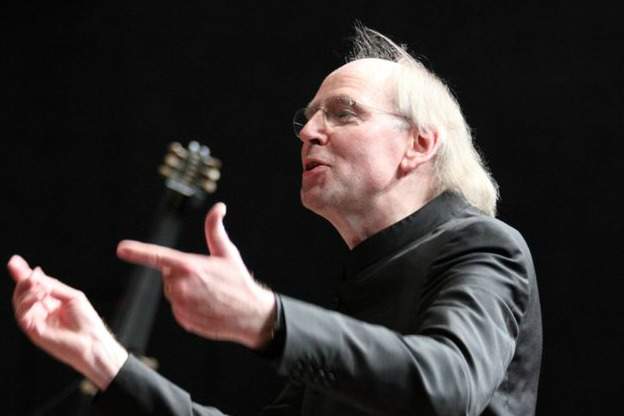
Western Wind Mass
When it comes to John Taverner’s Western Wind Mass, we’ve got choices! All the usual suspects have made recordings of this seminal work of early Tudor music: among them, Harry Christophers and The Sixteen, Paul Hillier and Ars Nova Copenhagen, the late Sir David Willcocks and The Choir of King's College, Peter Phillips and The Tallis Scholars.
The Taverner Choir and Players
Perhaps none though have presented the Mass in quite the way than have Andrew Parrott and The Taverner Choir and Players. Their 2016 Avie release forms a sort of anthology of 16th century musical life by interspersing movements of Taverner’s Western Wind Mass with various secular pieces by Henry VIII and others from his court.
Why, you may wonder?
Taverner’s Western Wind is considered the first mass of its kind in England to use a secular tune rather than plainchant as its cantus firmus. It’s this sacred-secular association around which Andrew Parrott builds a program that juxtaposes Taverner, the trend-setting master of Tudor polyphony, with his near contemporary, King and amateur musician, Henry VIII.
This is certainly not meant, like other recordings have done, to be a historical reconstruction of a liturgical service. Instead, Taverner’s Gloria is followed by a harpsichord rendition of the anonymous 16th century tune, My lady Careys Dompe, the Credo is followed by a sackbut and cornet version of Henry VIII’s If love now reynyd, the Sanctus followed by the 16th century My Lady Wynkfylds rownde, the Agnus Dei by another anonymous 15th century duet. Once the mass finishes, there are more secular tunes from Henry and his court—and more liturgical music from Taverner, including two responds for Easter and All Saints Matins services. Additionally, the recording explores the origins of that anonymous text and tune that started it all, Westron Wynde.
Questions of Pitch
It’s worth mentioning that there has been a precedent set to transpose Latin English church music up a minor third. A recent podcast featured The Tallis Scholars performing Taverner’s Missa Corona Spinea this way. It made for a brilliant, and astonishing sound.
In this present recording, however, Andrew Parrott and the Taverner choir perform at the lower notated pitch citing a lack of evidence to the contrary. The result is a very different sound characterized less by brilliance, and more by warmth and body of sound.
Another Perspective
The collected tracks are each so varied, and we’ve only scratched the surface. Hugh Aston’s Hornepype and a transcription of Taverner’s In nomine played on harpsichord by Steven Devine, the touching Wher be ye my love? and on the opposite end Taverner’s Dum transisset sabbatum in a spurious four part setting for men’s voices…It’s all here, just waiting to be heard… So, come to the chapel, be awed by the art of polyphony, and then pull back the curtain, and peek out onto the street, and further into the world of courtly entertainment. It’s a bit disorienting at first, but the perspective is, nonetheless, an interesting one.









